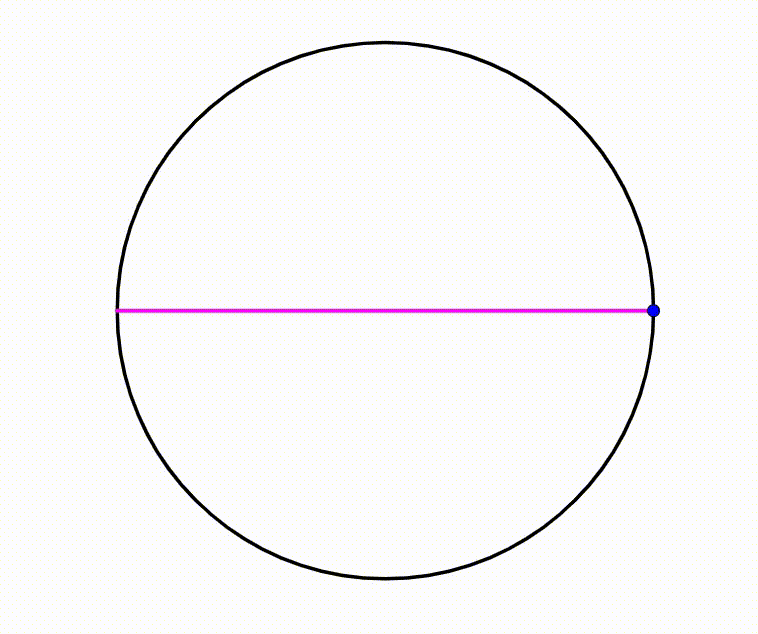Dynamic Geometry: P131
 The diagram shows a black circle with radius one. A purple diameter is drawn. The blue point travels freely on the circle, which allows us to draw a purple triangle. The cyan square is inscribed in the triangle so it is tangent to the hypotenuse. The left side angle and right side angle of the purple triangle are
and
. When the area of the cyan square is equal to
, the expression
can be expressed as
, where
and
are coprime positive integers. Find
.
The diagram shows a black circle with radius one. A purple diameter is drawn. The blue point travels freely on the circle, which allows us to draw a purple triangle. The cyan square is inscribed in the triangle so it is tangent to the hypotenuse. The left side angle and right side angle of the purple triangle are
and
. When the area of the cyan square is equal to
, the expression
can be expressed as
, where
and
are coprime positive integers. Find
.
The answer is 39.
This section requires Javascript.
You are seeing this because something didn't load right. We suggest you, (a) try
refreshing the page, (b) enabling javascript if it is disabled on your browser and,
finally, (c)
loading the
non-javascript version of this page
. We're sorry about the hassle.
Let the diameter of the circle be A B , the moving triangle vertex be C , the square vertex on A B be D , and the side length of the square be a . Then
A D + D B a csc α + a sec α ⟹ a = A B = 2 = csc α + sec α 2 = sin α + cos α 2 sin α cos α = sin α + cos α sin 2 α
When the area of the square,
a 2 ( sin α + cos α ) 2 sin 2 2 α sin 2 α + 1 sin 2 2 α 1 4 2 1 sin 2 2 α − 4 0 0 sin 2 α − 4 0 0 ( 2 9 sin 2 α − 2 0 ) ( 4 9 sin 2 α + 2 0 ) sin 2 α 1 + tan 2 α 2 tan α cot α + tan α 1 tan ( 9 0 ∘ − α ) + tan α 1 ⟹ tan α + tan β = 1 4 2 1 4 0 0 = 1 4 2 1 4 0 0 = 1 4 2 1 4 0 0 = 0 = 0 = 2 9 2 0 = 2 9 2 0 = 2 9 1 0 = 2 9 1 0 = 1 0 2 9 Since α is acute, Note that β = 9 0 ∘ − α
Therefore p + q = 1 0 + 2 9 = 3 9 .